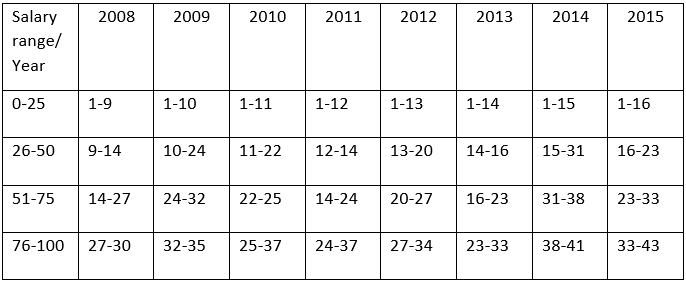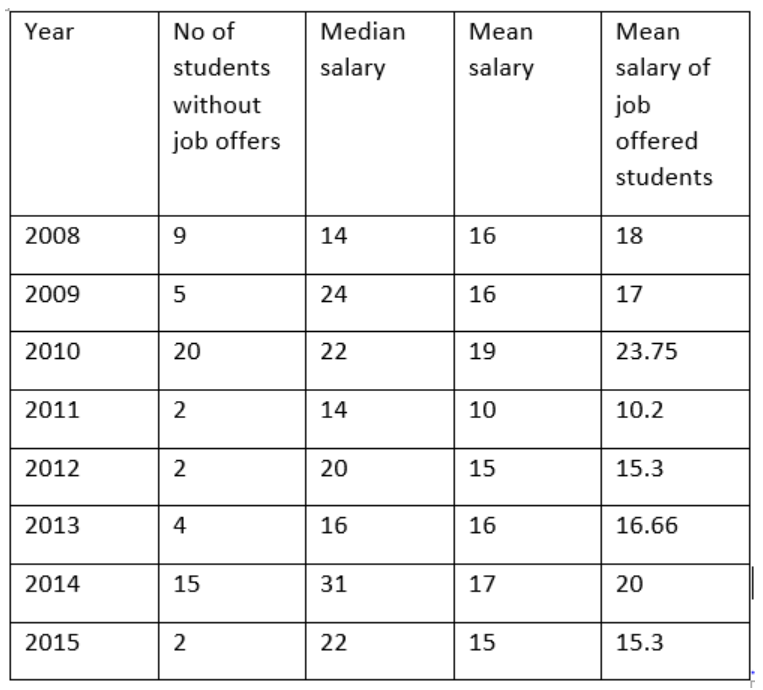XAT 2016 Question Paper
For the following questions answer them individually
XAT 2016 - Question 71
ABCD is a quadrilateral such that AD = 9 cm, BC = 13 cm and $$\angle$$DAB = $$\angle$$BCD = 90°. P and Q are two points on AB and CD respectively, such that DQ : BP = 1 : 2 and DQ is an integer. How many values can DQ take, for which the maximum possible area of the quadrilateral PBQD is 150 sq.cm?
Study the data given in the table below and answer the question that follow:

All figures are in percentage
Based on survey of ‘shop types’ Kamath categorized Indian states into four geographical regions as shown in the table above. His boss felt that the categorization was inadequate since important labels were missing. Kamath argued that no further labels are required to interpret the data.
XAT 2016 - Question 72
A consultant observing the data made the following two inferences:
Inference I: The number of Grocers per-thousand-population is the highest in North India.
Inference II: The number of Cosmetic per-thousand-population is the highest in South India.
Which of following options is DEFINITELY correct?
XAT 2016 - Question 73
The average size of Food Shops in East India was twice that of Food Shops in West India. Which of the following cannot be inferred from the above data?
XAT 2016 - Question 74
Bala collected the same data five years after Kamath, using the same categorization.
Which of the following statements can DEFINITELY be concluded?
Study the graph below and answer the questions that follow:
This graph depicts the last eight years’ annual salaries (in Rs. lacs.) offered to student during campus placement. Every year 100 students go through placement process. However, at least one of them fails to get placed. The salaries of all unplaced students are marked zero and represented in the graph.

The bold line in the graph presents Mean salaries at various years.
XAT 2016 - Question 75
In which year were a maximum number of students offered salaries between Rs. 20 to Rs.30 lacs(both inclusive)?
XAT 2016 - Question 76
Identify the years in which the annual median salary is higher by at least 60% than the average salary of the preceding year?
XAT 2016 - Question 77
Identify the number of years in which the difference between the average salaries of the top 25% and the bottom 25% is more than Rs. 20 lacs:
XAT 2016 - Question 78
If the average salary is computed excluding students with no offers, in how many years will the new average salary be greater than the existing median salary? Refer the table below for number of students without offers.

For the following questions answer them individually



.webp)


